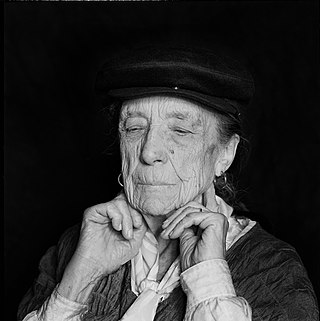
Louise Joséphine Bourgeois was a French-American artist. Although she is best known for her large-scale sculpture and installation art, Bourgeois was also a prolific painter and printmaker. She explored a variety of themes over the course of her long career including domesticity and the family, sexuality and the body, as well as death and the unconscious. These themes connect to events from her childhood which she considered to be a therapeutic process. Although Bourgeois exhibited with the abstract expressionists and her work has much in common with Surrealism and feminist art, she was not formally affiliated with a particular artistic movement.

Louise Abbéma was a French painter, sculptor, and designer of the Belle Époque.

Evelyn Beatrice Longman was a sculptor in the U.S. Her allegorical figure works were commissioned as monuments and memorials, adornment for public buildings, and attractions at art expositions in early 20th-century America. She was the first woman sculptor to be elected a full member of the National Academy of Design in 1919.

Franzisca Bernadina Wilhelmina Elisabeth Ney was a German-American sculptor who spent the first half of her life and career in Europe, producing portraits of famous leaders such as Otto von Bismarck, Giuseppe Garibaldi and King George V of Hanover. At age 39, she immigrated to Texas with her husband, Edmund Montgomery, and became a pioneer in the development of art there. Among her most famous works during her Texas period were life-size marble figures of Sam Houston and Stephen F. Austin, commissions for the Texas State Capitol. A large group of her works are housed in the Elisabet Ney Museum, located in her home and studio in Austin. Other works can be found in the United States Capitol, the Smithsonian American Art Museum, and numerous collections in Germany.

Enid Yandell was an American sculptor from Louisville, Kentucky, who studied with Auguste Rodin in Paris, Philip Martiny in New York City, and Frederick William MacMonnies.

The White Rabbits were a group of women sculptors who worked with Lorado Taft at the World's Columbian Exposition in 1893.
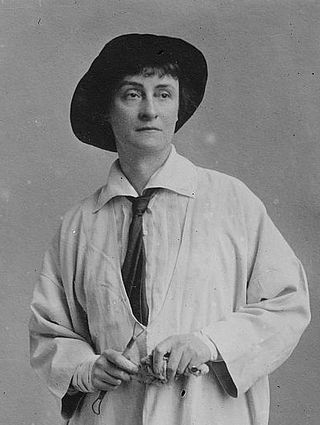
Janet Scudder, born Netta Deweze Frazee Scudder, was an American sculptor and painter from Terre Haute, Indiana, who is best known for her memorial sculptures, bas-relief portraiture, and portrait medallions, as well as her garden sculptures and fountains. Her first major commission was the design for the seal of the New York Bar Association around 1896. Scudder's Frog Fountain (1901) led to the series of sculptures and fountains for which she is best known. Later commissions included a Congressional Gold Medal honoring Domício da Gama and a commemorative medal for Indiana's centennial in 1916. Scudder also displayed her work at numerous national and international exhibitions in the United States and in Europe from the late 1890s to the late 1930s. Scudder's autobiography, Modeling My Life, was published in 1925.
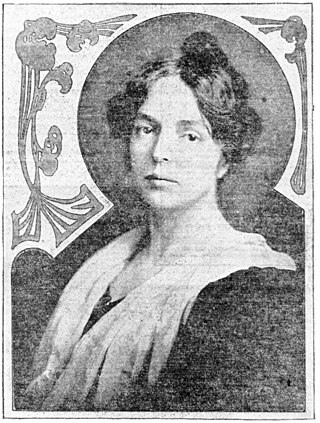
Theodora Alice Ruggles Kitson, known as Theo A.R. Kitson, was an American sculptor.

Adelaide Hanscom Leeson was an early 20th-century artist and photographer who published some of the first books using photography to illustrate literary works.
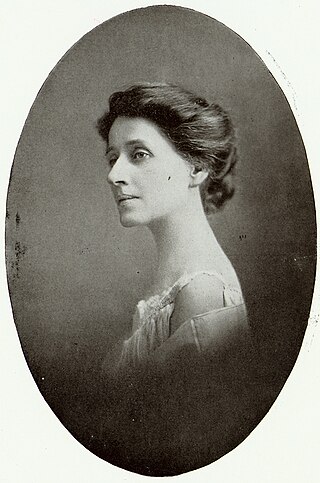
Adelaide Johnson (1859–1955) was an American sculptor whose work is displayed in the U.S. Capitol and a feminist who was devoted to the cause of equality of women. She was known as the "sculptor of the women's movement".

Julia Bracken Wendt, (1870–1942) a notable American sculptor, was born on June 10, 1871, in Apple River, Illinois, the twelfth of thirteen children in an Irish Catholic family.
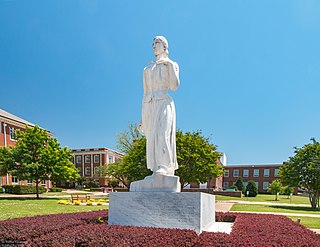
The Pioneer Woman statue is a work created by sculptor Leo Friedlander. It is located at the Texas Woman's University (TWU) in Denton, Texas, United States, and was commissioned as part of the Texas Centenary celebrations to mark the 100th anniversary of Texas Independence from Mexico. The sculpture was added to the National Register of Historic Places in 2018.
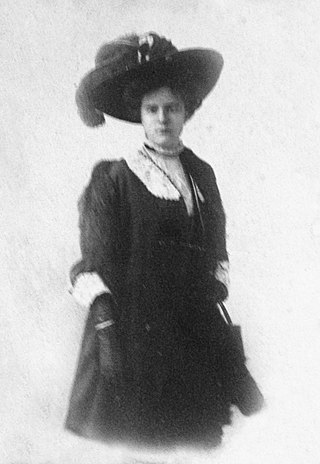
Alice Brown Chittenden was an American painter based in San Francisco, California who specialized in flowers, portraits, and landscapes. Her life's work was a collection of botanicals depicting California wildflowers, for which she is renowned and received gold and silver medals at expositions. She taught at the Mark Hopkins Institute of Art from 1897 to 1941.

Women in architecture have been documented for many centuries, as professional practitioners, educators and clients. Since architecture became organized as a profession in 1857, the number of women in architecture has been low. At the end of the 19th century, starting in Finland, certain schools of architecture in Europe began to admit women to their programmes of study. In 1980 M. Rosaria Piomelli, born in Italy, became the first woman to hold a deanship of any school of architecture in the United States, as Dean of the City College of New York School of Architecture. In recent years, women have begun to achieve wider recognition within the profession, however, the percentage receiving awards for their work remains low. As of 2023, 11.5% of Pritzker Prize Laureates have been female.

Louise Upton Brumback was an American artist and art activist known principally for her landscapes and marine scenes. Her paintings won praise from the critics and art collectors of her time. Writing at the height of her career, a newspaper critic praised her "firmness of character, quick vision, and directness of purpose." She said these traits "proved a solid rock upon which to build up an independent art expression which soon showed to men painters that they had a formidable rival." As art activist, she supported and led organizations devoted to supporting the work of under-appreciated painters, particularly women.

Emily Clayton Bishop was an American prize-winning sculptor. Although she died at a young age, her works in bronze and plaster are found in museum collections such as the Smithsonian American Art Museum and in shows such as Modern Women at PAFA (2013). Her childhood home, the Emily Clayton Bishop house, is a Maryland State historic site. The home sold in 2019 for $115,000.
Pacific Coast Women's Press Association was a press organization for women located on the West Coast of the United States. Discussions were not permitted regarding politics, religion, or reform. The members of the association took on causes related to certain public improvements in the way of roads, streets, parks, libraries, village improvement societies, free exhibits of county resources, the suppression of criminal details of sensational cases in newspapers, the suppression of criminal advertising, and school development. To facilitate the work, the association issued printed monographs.

Caroline Everett Risque Janis was an American painter, sculptor and a member of the early 20th-century artistic group The Potters.
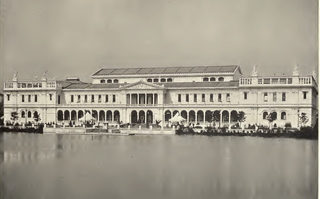
The Woman's Building was designed and built for the World's Columbian Exposition held in Chicago in 1893 under the auspices of the Board of Lady Managers. Of the twelve main buildings for the Exhibition, on June 30, 1892 The Woman's Building was the first to be completed. It had exhibition space as well as an assembly room, a library, and a Hall of Honor. The History of the World's Fair states, "It will be a long time before such an aggregation of woman's work, as may now be seen in the Woman's Building, can be gathered from all parts of the world again."

Johanna Knowles Woodwell Hailman was an American painter known for her floral paintings and scenes of industrial Pittsburgh.





















